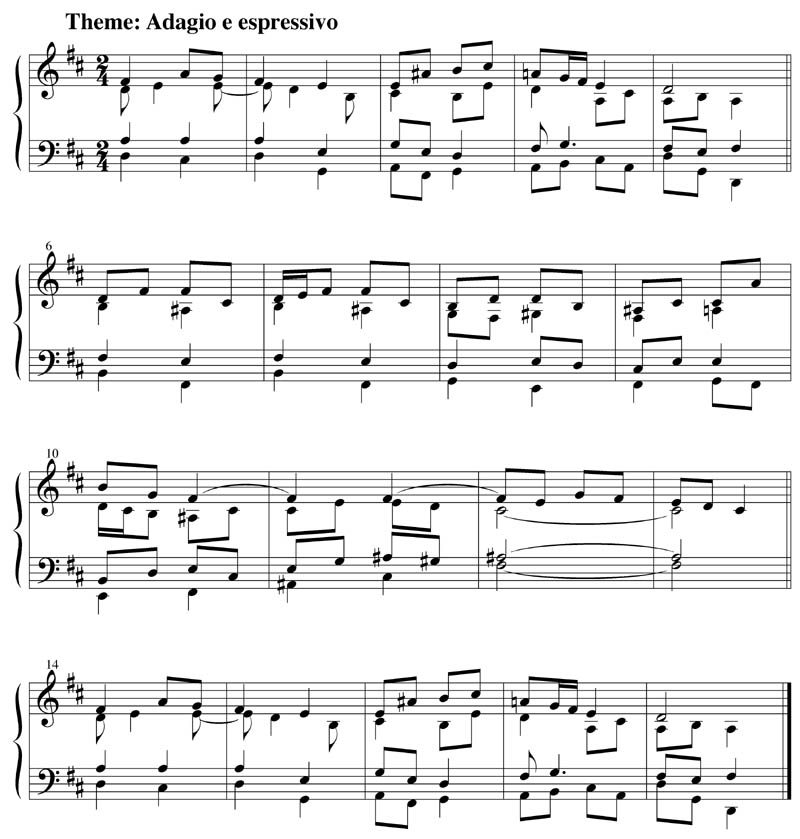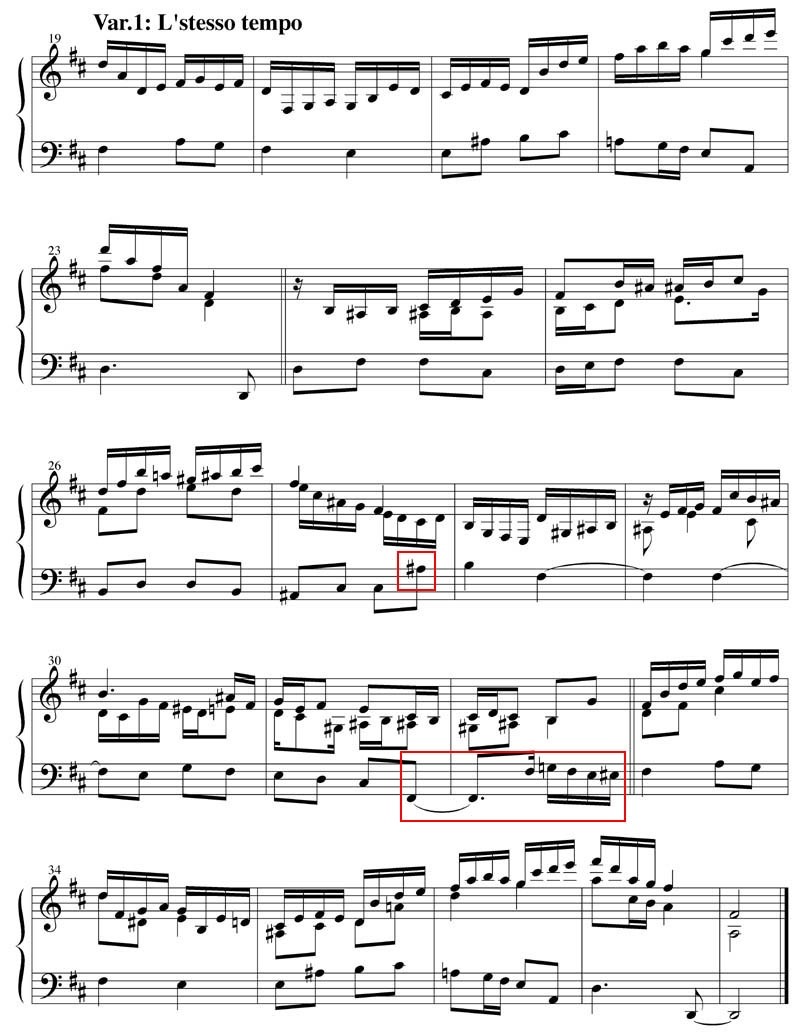Dr. Justin Henry Rubin © 2005
One of the foundations of instrumental music for the past four hundred years has been the composing of variations based on either a newly created theme or a melody from a folk song, the literature of sacred music, or another composer (past or present). We have already discussed a couple varieties of the genre of variations, namely the basso ostinato and chorale settings. However, the approach we will take here will differ in context and structure.
AUDIO and MIDI files can be listened to on this page or downloaded separately here.
1. Theme. It is important to take as a theme some material that has a strong profile, one with a recognizable character that will be distinct over the course of the variations to come, or simply one that you are particularly attracted to. For sake of example, we have chosen to use the short ternary piece composed in a previous lesson.
mp3 download (piano version)

2. First Variation: Displacement of Theme. Here we have taken the lyrical melody of the theme and placed it in the bass (with a couple of alterations marked below in the score); the displacement of a melody from the treble to an inner or lower voice is a typical device in preparing to compose a variation. One method involves writing the part out entirely on the manuscript first, then composing around it as appropriate. Although many of the harmonic ideas of the theme are used again here, the flowing sixteenth note texture of the upper parts defines the character of this variation.

Continue on to more variations.
The views and opinions expressed in this page are strictly those of the page author.
The contents of this page have not been reviewed or approved by the University of Minnesota.
View Privacy Statement
Copyright © 2005 by Justin Henry Rubin
http:// www.d.umn.edu /~jrubin1
The University of Minnesota is an equal opportunity educator and employer. ![]()


